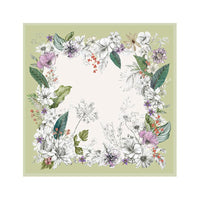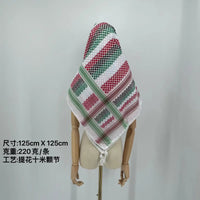Did You Know What the Tassels on the Qatari Headgear Are Called and Their Uses?
Tassels—small yet significant—are part of many traditional garments in the Arab world, and Qatari headgear is no exception. In this article, we're diving into the history and significance of the tassels on the agal (also spelled iqal) and their practical uses.
In Qatar, these tassels are called karakeesh, and though they may seem purely decorative, they actually hold cultural and practical value. Many Arab countries incorporate tassels in their traditional clothing, from the front of the robe in Morocco to the side of the headgear in Oman. In Qatar, however, the tassels hang down from the agal.
Let’s explore why these tassels are more than just an accessory.
1. A Practical Origin
Traditional Arab clothing is deeply practical. In the harsh desert climate, garments were designed to serve specific purposes. For example, the white thobe (robe) helps keep the wearer cool, and fabrics are chosen for their ability to allow a breeze to pass through. The agal itself, a black cord worn over the ghutrah (headscarf), was originally used as a makeshift rope to tie down animals like camels. Every element had a function.
As for the karakeesh, they are tied with four different ropes and interwoven to form a pattern. Some believe these tassels could be used in daily life, like whipping an animal while riding, similar to how ropes were used for tying. Not as fancy as noblemen with ornate riding gear, nomads and common folk found practical solutions with what they wore.
2. Symbol of Respect and Tradition
The agal holds so much importance in Qatari culture that there's even an expression: “Afarik al-agal lak,” meaning, I raise my agal to you, a gesture of utmost respect. In some situations, men would throw their agal to the ground, symbolizing a vow not to pick it up until justice is served.
It’s a cultural artifact, not just a piece of headgear but a symbol of honor, respect, and sometimes, determination.
3. Fragrance and Style
Another interesting use for the karakeesh was to dip them in fragrant oils or perfumes. As one walked, the tassels, often hanging behind, would spread a pleasant scent, creating an aura of luxury and cleanliness. It was a simple way to add fragrance to your attire in a time when perfumes weren't as accessible as they are today.
4. Posture Perfector
Wearing the agal with the tassels at the back can even serve as a subtle reminder to keep good posture. When the tassels brush against your back, it feels like a nudge from an old friend reminding you to stand up straight.
5. A Sculpture to Honor the Agal
If you ever visit Lusail City in Qatar, you’ll find a sculpture that honors the agal—a striking piece of public art that captures the cultural significance of this simple yet powerful symbol.
The next time you see a Qatari agal with karakeesh, you’ll know that those tassels carry centuries of history, practicality, and tradition. They’re not just an accessory—they’re a reflection of the past, worn with pride today.





